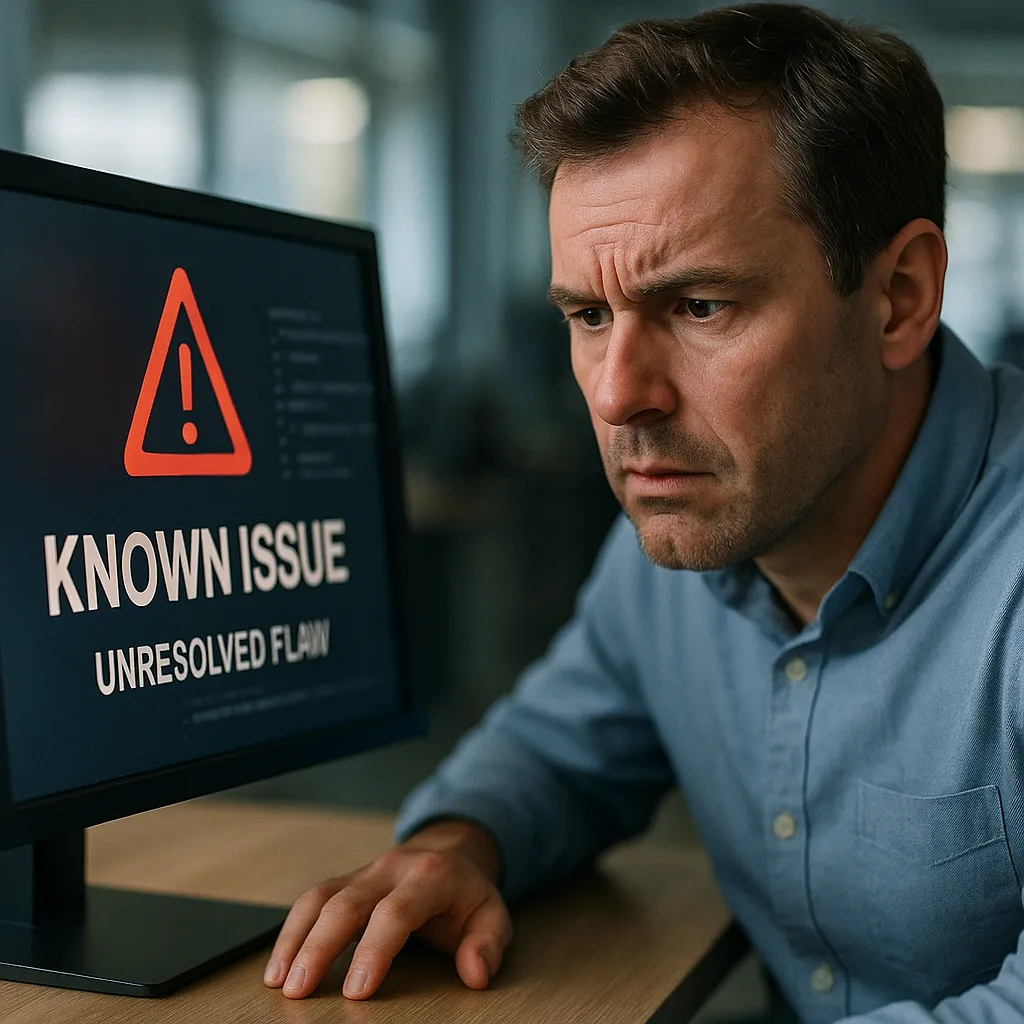It's a Known Bug Why This is the Scariest Phrase in Financial Tech
Published on: Thu Apr 10 2025 by Ivar Strand
“It’s a Known Bug”: Why This is the Scariest Phrase in Financial Tech
During a system audit or after a transaction fails unexpectedly, a manager might hear a casual explanation from their vendor or IT department: “Oh, yes. That’s a known bug.”
While often delivered as a simple statement of fact, this is one of the more concerning phrases a professional with fiduciary responsibility can hear. It is a formal acknowledgment of a flaw in the system’s logic, and it implies a deliberate decision by the provider not to resolve it. This is not a technical issue to be dismissed; it is a critical governance signal that requires a formal response.
The Normalization of Unresolved Flaws
In the world of software development, not all bugs are considered equal. Vendors must triage and prioritize fixes based on factors like the severity of the issue, the number of clients it affects, and the cost of developing a patch. Consequently, some bugs are classified as low-priority and placed on a long-term backlog, which in many cases means they will not be fixed.
The problem is that a vendor’s definition of “low-priority” may not align with your organization’s specific risk profile. A flaw that is a minor inconvenience for a commercial user could represent a major compliance or financial control gap for an organization managing donor funds in a fragile state. To accept the “known bug” explanation without a structured process is to engage in passive, undocumented risk acceptance.
A Framework for Managing Known Issues
An organization cannot outsource its risk management to its software vendor. The acknowledgment of a “known bug” should not be the end of a conversation; it must be the start of a formal, internal process.
At Abyrint, our vendor management framework includes a specific protocol for addressing these issues. We advise our clients to take the following steps:
-
Formally Document the Issue. The bug must be recorded in an internal risk or issue register, separate from the vendor’s ticketing system. This entry must include the vendor’s official reference number, a clear description of the bug’s behavior, and the potential impact on your specific operations. Verbal acknowledgments are insufficient.
-
Conduct an Independent Risk Assessment. Your organization must assess the bug’s risk based on your own context, not the vendor’s generic severity level. What is the potential financial exposure? Does the bug create a compliance vulnerability under a specific grant agreement? What is the reputational risk if this flaw is exploited? The outcome of this assessment should determine your response.
-
Demand a Formal Timeline for Resolution. Formally request a timeline for a fix from the vendor, in writing. If the vendor cannot or will not provide one, that is a critical piece of information about your long-term risk exposure with the product and should be factored into your vendor relationship management.
-
Design and Implement Mitigating Controls. If a fix is not imminent, the organization is responsible for designing and implementing a “compensating control.” For example, if a known bug prevents the system from automatically flagging duplicate invoice numbers, the compensating control might be a mandatory, monthly semi-automated analysis of all vendor payments. This new manual or semi-automated process must itself be documented and auditable.
Incorporating into Vendor Agreements
This process should be a standard component of professional vendor management. Wherever possible, Service Level Agreements (SLAs) should include clear language about resolution times for bugs, with severity levels defined by your organization’s operational and fiduciary risk, not solely by the vendor’s commercial priorities.
Independent monitoring is designed to uncover these discrepancies. A robust internal process to manage the findings is what turns that data into genuine risk mitigation, improved governance, and a more transparent and accountable relationship with your technology providers.



